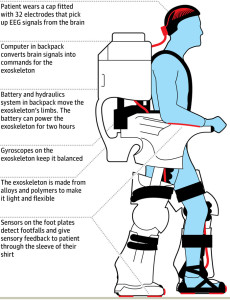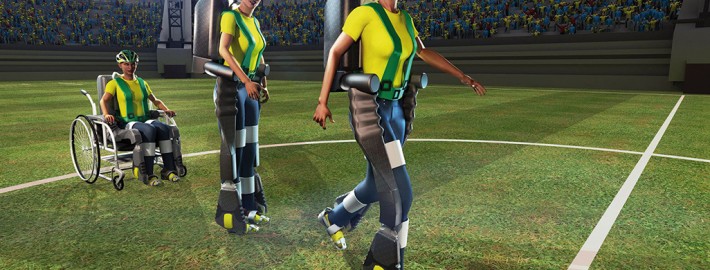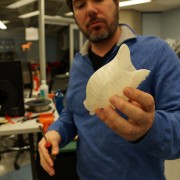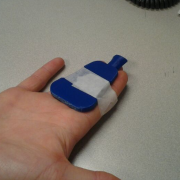Paraplegic with Exoskeleton to Kick First Ball at World Cup Thanks to 3D Printing
At the World Cup in São Paulo this year, the world will come together, not just to compete in the most popular sporting event across the globe, but to give a young, Brazilian paraplegic the ability to walk. An international team made up of researchers from Germany, France, and the United States have designed a mind-controlled exoskeleton that will give their candidate the ability to make the first kick at the opening ceremony of World Cup 2014. But, to create such a personally-tailored device, the team had to invoke use of 3D printing.
 The idea for the exoskeleton comes from Miguel Nicolelis, a neuroengineer based at Duke University in North Carolina, who first made headlines in 2008 when his lab demonstrated the ability of a monkey to control a robot by thought alone. This experiment then led to the Walk Again Project, in which the Duke engineer, in conjunction with teams in Germany, France, and other US institutions, would build a mind-controlled exoskeleton. They’ve made great strides since the project began and are now ready for a live demonstration at the World Cup.
The idea for the exoskeleton comes from Miguel Nicolelis, a neuroengineer based at Duke University in North Carolina, who first made headlines in 2008 when his lab demonstrated the ability of a monkey to control a robot by thought alone. This experiment then led to the Walk Again Project, in which the Duke engineer, in conjunction with teams in Germany, France, and other US institutions, would build a mind-controlled exoskeleton. They’ve made great strides since the project began and are now ready for a live demonstration at the World Cup.
The bones and muscle of the exoskeleton are lightweight metal alloys and hydraulic pumps, but the brain operating it is all human. Outfitted with an EEG cap and strapped into the robotic suit, the brainwaves of their candidate are translated into physical movements through the use of a computer. In order to get the cap to fit just right, however, Colorado State University’s Idea-2-Product3D printing lab was commissioned to 3D print a flexible piece of padding that would be inserted between the wearer’s head and the cap itself. Watch the 3D printing lab discuss their role in ensuring that the EEG cap stays in place in the video below:
Though 3D printing is only a small component in the Walk Again Project, it is an important one. In order for the cap to properly pick up signals from the wearer’s head, a good fit is necessary. And, because it is anticipated that about 1 billion people will be watching the event, the stakes for the CSU lab and the entire project team are quite high.
We’ve yet to find out who exactly will be kicking off the games this year, as Nicolelis is currently training nine paraplegic men and women, between the ages of 20 and 40, to use the suit. Whoever does get to perform the miracle in front of a global audience will likely be remembered for years to come. For further information about how the suit works, visit the source link below. For a brief history of the project, watch the following video.













Leave a Reply
Want to join the discussion?Feel free to contribute!